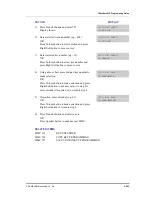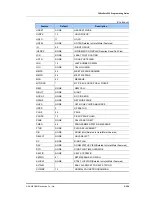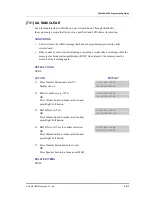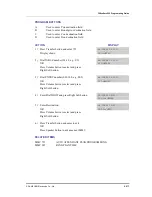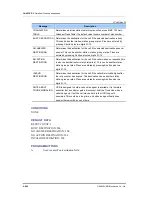
OfficeServ 500 Programming Guide
© SAMSUNG Electronics Co., Ltd.
2-267
(Continued)
Field
Description
Default
These are the DTMF codes that is sent to the VMAA port in place
of regular progress tones. For example, when a VMAA port goes
off hook to originate or transfer a call, instead of hearing normal
dial tone, it will hear DTMF ‘BA’. Progress tones can greatly
increase the efficiency of a VMAA system because it is easier
and quicker to detect DTMF than a busy, ring back or DND tone.
Progress tones can identify any of the following.
-
No
Call Type
Description
Default
0 DIAL
TONE Dial
Tone
BA
1 BUSY
TONE Busy
Tone
4
2 RINGBAK
TONE
Ringback Tone
5
3 DND
NO
MORE
DND or No More Call Button Error
6
4 HDSET
ANSWER
Off Hook Answer
3
PROGRESS
TONE ID
5 SPKER
ANSWER
On Hook Answer
2
GENERAL RULES
1) 201 is talking to a trunk and presses TRANSFER plus the station number, but the
station is forwarded to VM/AA and VM/AA answers. When this happens, if 201
presses TRANSFER again to return to the trunk, the VM/AA port is not on hold. It is
disconnected.
2) A VM/AA port leaves a message indication for a station. When the station returns the
message, any available port in the VM/AA group should ring, not only the one that
left the message.
3) A VM/AA port leaves a message for a station. When the station returns the message,
the MESSAGE LED is not automatically turned off. If a VM/AA system turns on the
MESSAGE LED, the VM/AA system must turn it off.
4) If DTMF call progress tones are not enabled, the system sends regular call progress
tones.
5) When a VM/AA port calls a station that is in the AUTO ANSWER or VOICE
ANNOUNCE mode, the phone will be forced to ring.
6) All calls to a VM/AA port or group ring with Trunk line ringing cadence, not intercom
ring cadence.

